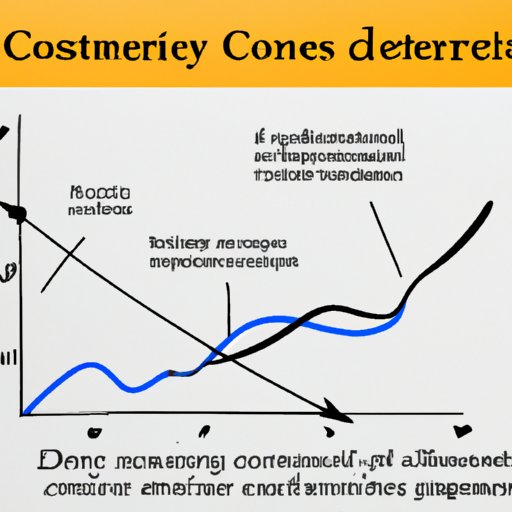Introduction
The term “coefficient” may not be familiar to everyone, but it plays an important role in scientific research. In this article, we will explore what is the coefficient in science and how it affects scientific discoveries. We will look at the types of coefficients, their role in scientific contexts, and how to calculate them.
Explaining the Basics of Coefficient in Science
A coefficient is a numerical value that describes the relationship between two or more variables. It is typically used in mathematical equations to represent the strength of a relationship between the variables. For example, when examining the relationship between temperature and pressure, a coefficient would indicate the degree to which changes in one variable affect the other.
There are several types of coefficients used in science:
- Coefficient of Correlation: This type of coefficient measures the strength of the linear relationship between two variables. A coefficient of correlation ranges from -1 (indicating a perfect negative correlation) to 1 (indicating a perfect positive correlation).
- Coefficient of Friction: This type of coefficient is used to measure the resistance between two surfaces when they move against each other. A higher coefficient of friction indicates greater resistance.
- Coefficient of Variation: This type of coefficient is used to measure the relative variability of a set of data. A higher coefficient of variation indicates greater variability.
- Coefficient of Drag: This type of coefficient is used to measure the amount of air resistance encountered by a moving object. A higher coefficient of drag indicates greater resistance.

Analyzing Examples of Coefficients in Scientific Contexts
Let’s take a closer look at some of the examples of coefficients mentioned above:
Coefficient of Correlation
The coefficient of correlation is often used in statistics to measure the strength of the relationship between two variables. For example, researchers might use the coefficient of correlation to measure the strength of the relationship between the number of hours a student spends studying and their grades. A high coefficient of correlation would indicate a strong correlation between the two variables.
Coefficient of Friction
The coefficient of friction is commonly used in physics to measure the resistance between two surfaces when they move against each other. For example, engineers might use the coefficient of friction to determine the amount of force needed to move a car up a hill. A higher coefficient of friction would indicate that more force is needed.
Coefficient of Variation
The coefficient of variation is frequently used in statistics to measure the relative variability of a set of data. For example, researchers might use the coefficient of variation to compare the variability of two sets of data. A higher coefficient of variation would indicate greater variability.
Coefficient of Drag
The coefficient of drag is often used in aerodynamics to measure the amount of air resistance encountered by a moving object. For example, scientists might use the coefficient of drag to measure the amount of air resistance experienced by a plane in flight. A higher coefficient of drag would indicate greater resistance.
Investigating the Role of Coefficients in Scientific Research
So, how are coefficients used in scientific research? Coefficients are used to quantify the strength of relationships between variables. They provide a way for scientists to measure and compare the effects of different factors on a given outcome. For example, a researcher might use the coefficient of correlation to measure the strength of the relationship between temperature and pressure, or the coefficient of friction to measure the resistance between two surfaces.
Coefficients also help scientists make predictions and draw conclusions. By measuring the strength of relationships between variables, scientists can make more informed decisions about how certain factors might influence a given outcome. For example, a scientist might use the coefficient of correlation to predict how changes in temperature will affect pressure, or the coefficient of friction to predict how two surfaces will interact when they move against each other.

Examining the Impact of Coefficients on Scientific Discovery
Coefficients have had a significant impact on the way scientists look at the world. By quantifying the strength of relationships between variables, coefficients provide a way for scientists to measure and compare the effects of different factors on a given outcome. This has enabled scientists to make more accurate predictions and draw more reliable conclusions, leading to groundbreaking discoveries.
One example of a significant discovery made with the help of coefficients is the theory of evolution. Charles Darwin used the coefficient of correlation to measure the strength of the relationship between different species, and his findings provided evidence for the theory of evolution.
Another example is the discovery of the structure of DNA. Francis Crick and James Watson used the coefficient of variation to measure the variability of DNA sequences, and their findings provided evidence for the double-helix structure of DNA.

Discovering How to Calculate Coefficients in Science
Now that we’ve seen how coefficients are used in scientific research, let’s take a look at how to calculate them. The math behind coefficients can be complex, but there are some basic steps you can follow to calculate them.
First, you need to identify the variables you want to measure. Then, you need to collect data on those variables. Once you have collected the data, you can then use a statistical formula to calculate the coefficient. Different types of coefficients require different formulas, so make sure to use the correct formula for the type of coefficient you are calculating.
Finally, you need to interpret the results. The value of the coefficient will tell you the strength of the relationship between the variables. A coefficient of 1 indicates a perfect positive correlation, while a coefficient of -1 indicates a perfect negative correlation. A coefficient of 0 indicates no correlation.
Conclusion
In this article, we explored what is the coefficient in science and how it affects scientific discoveries. We looked at the types of coefficients, their role in scientific contexts, and how to calculate them. We also examined the impact of coefficients on scientific discoveries, such as the theory of evolution and the structure of DNA. Finally, we discussed how to calculate coefficients in science.
Coefficients are an essential tool in scientific research, providing a way for scientists to measure and compare the effects of different factors on a given outcome. Through the use of coefficients, scientists have made some incredible breakthroughs that have changed the way we look at the world.
(Note: Is this article not meeting your expectations? Do you have knowledge or insights to share? Unlock new opportunities and expand your reach by joining our authors team. Click Registration to join us and share your expertise with our readers.)
